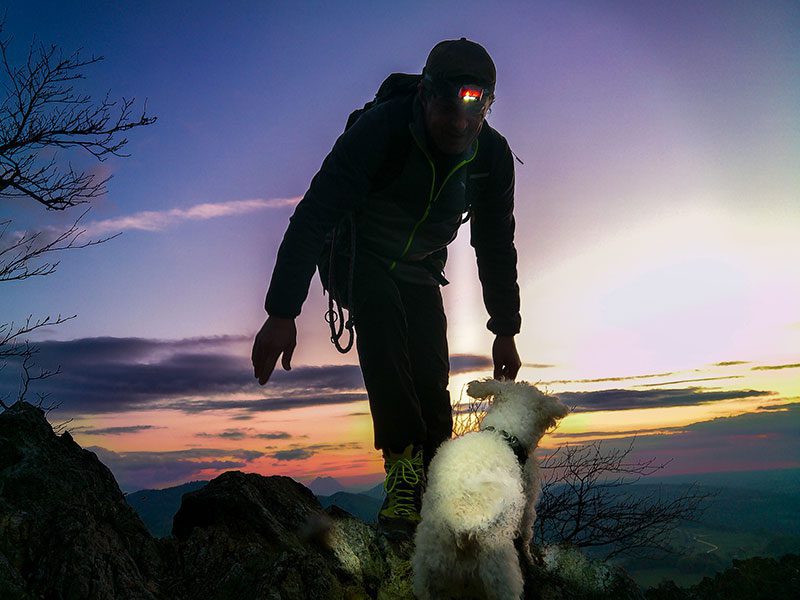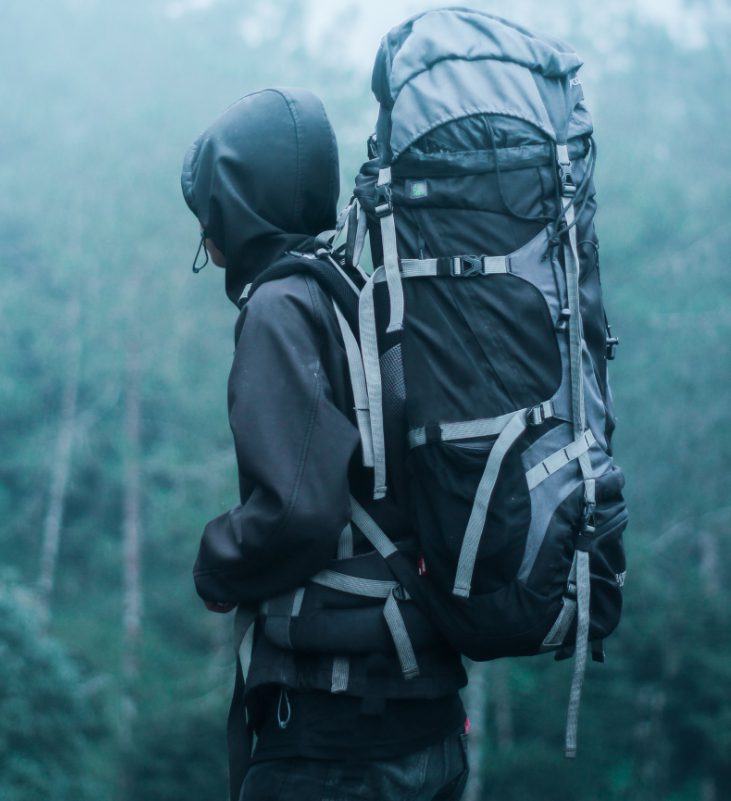Hello and greetings from the Salzkammergut (Salzburg region, Austrian Alps) on the topic of ‚Preventing Dog Overexertion.‘
Great that you are researching mountain tours and hikes with your furry friend – it shows your responsibility towards your four-legged companion – cool! (Believe me, this is anything but self-evident…).
As a dog owner and mountain enthusiast ;), I love the tours with my little rascal. Such fantastic experiences – every time! But there are many things to consider, especially when it comes to the physical strain on our loyal four-legged friends.
A question I’m often asked is: Can you overexert a dog?
And that’s why in this article, I’ll explain everything you need to know about „Can you overexert a dog?“
Mountain Tours and Hikes with a Dog: Can you overexert a dog?
Links witdh [*] or Amazon Icon are Ads
Gear and equipment reviews for mountain tours and hikes
The Basics: Can Dogs Get Overexerted? How to Protect and Help Them
Let’s dive into the „Preventing Dog Overexertion“ basics first.
We all know our furry friends have endless energy, and their enthusiasm to explore matches ours, but there’s a limit to how much they can handle.
Imagine this: You embark on a breathtaking mountain trail, your dog’s tail wagging with excitement, nose sniffing the mountain breeze. But here’s the catch – dogs can’t tell us when they’ve had enough.
They push themselves to please us, to match our pace, to be the best adventure buddies ever!
And this is where it gets tricky: Overexertion in dogs is a real concern. It’s not just physical fatigue; it affects their joints, paws, and overall well-being.
But how do you know when your canine companion has reached their limit?
Watch for signs: excessive panting, reluctance to move, or a change in behavior. Be attentive – they’re counting on you to be their voice.
So, what can you do to protect your furry friend from overexertion?
Firstly in Preventing Dog Overexertion: know your dog’s limits. Every pup is different, just like us. Some are natural athletes, while others enjoy a more leisurely pace.
Preventing Dog Overexertion: Here’s a quick checklist
Remember: It’s not a race. It’s an adventure.
And always be ready to adapt: If your pup shows signs of fatigue, it’s okay to cut the tour short. Their well-being is the top priority.
Now, let’s talk about helping them recover
After a vigorous hike, your dog deserves some extra care. Just like us, they need hydration, a good meal, and some well-deserved rest. Pay attention to their paws – a soothing balm can work wonders.
And don’t forget: A little massage goes a long way. It’s not just for humans; dogs love it too. It helps their muscles relax and promotes a stronger bond between you and your furry friend.
Exploring Together: Tips for a Successful Mountain Hike with Your Dog
Now, let’s get into the fun part – exploring the trails with your furry friend! But before you hit the trails, here are some tips for a successful mountain hike with your dog:
- Preparation is Key: Check the weather, trail conditions, and pack accordingly. Remember, your dog relies on you for everything.
- Trail Etiquette: Respect other hikers and wildlife. Keep your dog on a leash where required, and always clean up after them.
- Snack Time: Pack some tasty treats for both you and your furry companion. It’s a great motivator and adds to the fun.
- First Aid Kit: Be prepared for the unexpected. Carry a small first aid kit for both you and your dog.
And here’s a pro tip to the topic of „‚“Preventing Dog Overexertion“:
Build a strong bond: Hiking with your dog is not just about reaching the summit; it’s about the journey together. Take breaks, play, and create lasting memories.
After all, they’re not just our pets; they’re family.
Choosing the Right Trail: Tailored Adventures for You and Your Dog
So, how do you choose the perfect trail for you and your dog? It’s all about matching the trail to your dog’s abilities and preferences.
Consider these factors:
- Length and Difficulty: Opt for trails that suit both you and your dog’s fitness levels. Start with shorter hikes and gradually progress to more challenging ones.
- Terrain: Some dogs love rocky terrain, while others prefer grassy paths. Know your dog’s preferences and choose accordingly.
- Wildlife: If your dog gets easily excited by wildlife, choose trails where encounters are less likely.
- Weather: Be mindful of weather conditions. Some dogs love a splash in the stream, while others prefer a dry trail.

Note for mountain tour fans (with or without dog(s))
Good and very reliable weather services (for the Alpine region) that I can recommend are: UWZ (Austria), METGIS Mountainweather and the website of the German Alpine Association (DAV).
In Case of Emergency: How to Act When Your Dog is Overexerted
If your dog is overexerted, you MUST give them a break and offer water. If possible, let them rest in a shaded area. Make sure your dog doesn’t lie in the sun during the break, as this could cause them to overheat even more.
You can also temporarily (10 – 20 minutes) put a damp T-shirt or similar on them to cool down.
If your dog does not recover or their condition worsens, consult a veterinarian. Overexertion in dogs can lead to a life-threatening situation if not treated promptly.
First Aid Measures for Overexertion
- Give your dog water immediately. Offer water, but not too much at once.
- Calm your furry friend(s): Sit next to your dog, pet and soothe them – they should „calm down“.
- Wait until your dog’s circulation stabilizes before continuing: The pulse must slow down, and the circulation needs to settle (how to measure your dog’s pulse? See here or in one of my recommendations).
- Give your dog a break and let them rest. Find a shady place or a spot with a cool surface for them to recover.
- Check if your dog is injured. Especially their paws can suffer damage from hiking or climbing.
- Check their body temperature. If your dog is overheated, cool them down immediately by spraying them with water or placing a damp towel, T-shirt, etc., on their body.
- If the symptoms persist or worsen: Abort the tour and take your dog to the veterinarian.
Conclusion on ‚Preventing Dog Overexertion‘
In summary, overexertion in dogs can be recognized by heavy panting, slow movements, and refusal to move.
To prevent overexertion, pauses and sufficient water should be offered.
If there is suspicion of overexertion, take a break, and your furry friend MUST at least take a few sips of water!
So, with planning and caution, you can offer your dog a great experience even on challenging mountain tours. Make sure to plan the tour realistically, pay attention to your dog’s signals, and take regular breaks.
And above all: Have fun and enjoy the time with your loyal companion!
We hope our article was helpful. Do you have more tips or experiences on the topic of „Mountain Tours and Hikes with Dogs“? Then feel free to leave a comment in our summit book 😉
Also, we’ll see you, and stay on the path!
Gear and equipment reviews for mountain tours and hikes
Tips, Experiences, and Knowledge for Mountain Tours and Hiking









